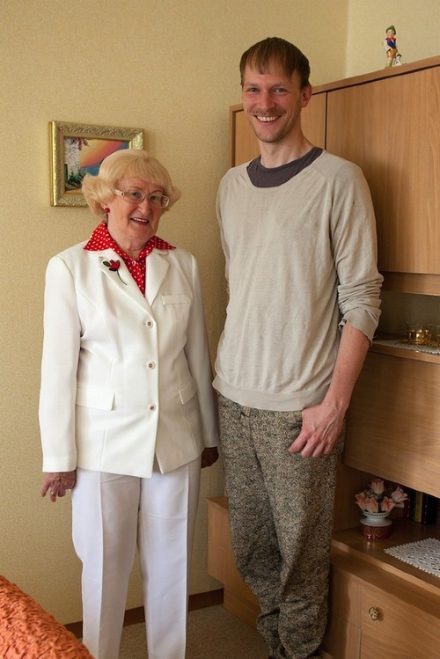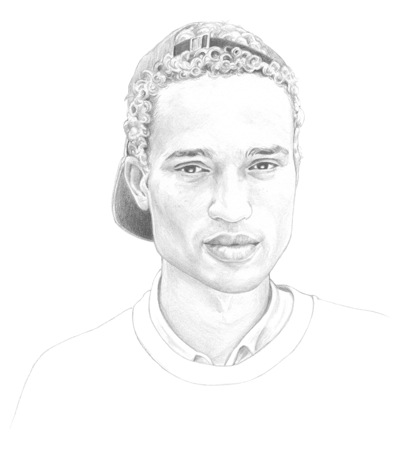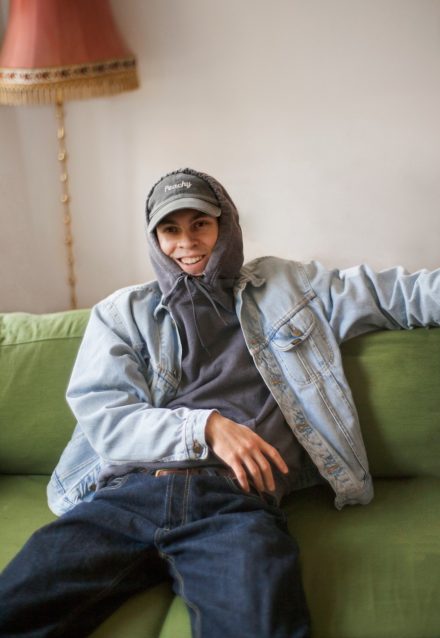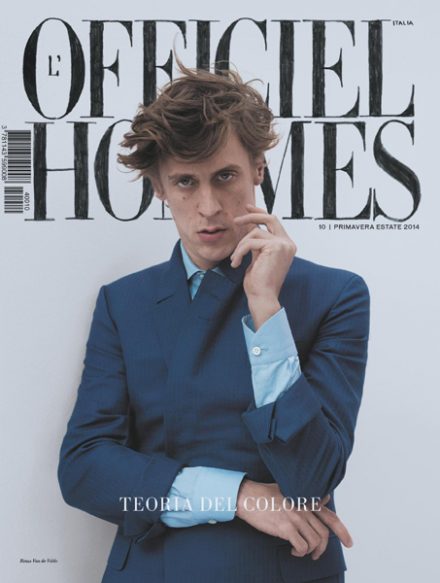With a background informed by different jobs and their creative perspectives and armed with a naturally curious mind, Juergen Veit set out years ago to start his own line of larger-than-life accessories—wearable art so to speak. A stroll outdoors is a great source of inspiration for the designer who actively searches his immediate environment for unique materials. Working day and night, simple materials are transformed into unimaginable beauties. Recently, we stopped by his atelier, by the woods, to learn more about the man behind the art and of course, to peek at his latest creations. With classical music humming in the background, we discussed his journey and the process behind his work.

You’re from the south of Germany, why did you come to Berlin ?
I was in Berlin for the first time in 1987. I knew then —I have to come back to live and work here. I was inspired by the political situation; Berlin was like an island, a melting pot of so many different cultures, music and art. The violence in the city was unbelievable, and, at the same time, it a place full of harmony. People in Berlin were so creative in building their private space—that’s still lasting today. Years later, after working in the US, I had difficulties finding a comparable place in Germany where I wanted to live. In 2003 I came back to Berlin to settle.
You’ve had a lot of different jobs—visual merchandising, graphic design, photography, trends scouting —all very creative, but was there not one thing that interested you most?
I started my studies in graphic design/photography in Ulm and it was just a matter of time that I found out this wasn’t the right thing for me. So I started doing a lot of different jobs in shops and art fairs. While working there, I met a lot of people, all connected to in the art industry. Some of them offered me jobs and that’s how it all started. The interesting thing about my creativity is that it acts on different levels. It’s so inspiring to just not focus on one thing and to connect all these experiences and find out about their essence – that’s why I like doing all those different kind of jobs.
When did you first come into contact with accessories and thought to make them yourself?
In the 90s I had some luck; a friend of mine knew the boss of Heinrich Sommer, a company well known for their accessory design. He brought me in contact with them and before I knew it, I was head of design. This was an amazing time for me, before starting my business I tried a few things to find out how I wanted to go visually. I started working on my CV, the packing, website etc. On a trip to Denmark I made this great black-white photo which i use now for the welcome page. Everything came together perfectly but not without some helping hands – Thank you all!!
Isthis your only job right now ?
No, I travel to Hamburg for my other job.
Your choice of material is very special, like celluloid. I know that toys in the 70s where made of this material and it’s very fragile. Why do you choose this?
I’m really interested in how materials feel and look, most of my pieces have something from nature and I like to combine this with technical materials.
How did you learn to work with these different materials?
It’s a journey for me. It all started at the age of 5 drawing with grass and leaves. The juice of the leaves gave a beautiful green colour. And that’s what I’m still doing now; I’m curious person with a will to learn every day.
Where do you get your materials from? Do you buy everything or do you also just “find” something and then make something of it?
Yes, but it’s not that I go outside and think to myself “I need a stone, a leaf or some wood.” I go out for a walk once a week (I try to go out more) and I collect everything that I find interesting, which for some people it may look dirty or stink, but I don’t see it like that – I see something beautiful in it. I have a huge archive full of all kinds of things that I found outside.
Where do you get your inspiration from?
I’m inspired by work of monks, this ruminant kind of work, also known as religious folk arts or monastery crafts. What they create is just with simple materials, for example, a strip of paper. That’s incredibly wonderful, using such simple materials to create a new beautiful world. Also Charles Fréger “Wilder Mann” and his image of “the savage” is a big inspiration for me. He shows a lot of examples of folk art and their respective costumes. You can see how people got inspired by nature, lived within nature and how they celebrate their traditions and superstition – all shown in their costumes. Those two aspects have both a connection to nature, and I can honestly say that I find nothing more beautiful than nature; it fascinates me.
What do you love the most about your job ?
My job in creating unique handcrafted objects – a piece of art that you can wear, and that piece is a part of my own journey. I don’t do this just to make money, a reason why I don’t do series of the designs. Of course it’s a good thing, selling some pieces –that means that the person who bought it had a connection to my work. I’m the only person who works on the pieces, from beginning till the end, and if I don’t like the result – even if it takes me weeks or months – then I destruct it. I need to be absolutely satisfied with every piece. As I said before, the pieces are a part of my own journey.
Is making accessories a kind of relaxing moment for you ?
No, no no, defiantly not (laughs). Everyone is asking me that. I just make one piece, I work with fragile materials and these materials have to dry sometimes for hours, weeks, or months. When it breaks… everything will be gone. You can compare it to the work of a painter; I don’t do any sketches, I just start working. When a painter is not satisfied with his painting on a wall he’ll not use it, the same goes for me. When a piece doesn’t fit on the dummy or feels uncomfortable while wearing, I won’t use it.
Do your pieces tell a story or invoke a feeling?
No, for me my pieces are more the architecture of nature, however, I think most of the artists have somehow a specific feeling or maybe a story behind the pieces, they are the ones working on it for months, after all. My idea is to leave this up to the viewer-customer. They can build their own story. I don’t want to impose one’s will.
What was the most interesting turn in your career?
When I was the head of design at Heinrich Sommer, this was the job I always dreamed about. I travelled a lot and saw amazing places. I was a young guy back then, and I couldn’t believe that I was the one who had the responsibilities over the designs of all the accessories. This was for sure a big turn in my career; it inspired me to do what I’m doing now.
Do you have plans for the future, or do you go where the wind blows?
No, even if its stormy today (laughs). I know for sure that I want to focus more on my pieces. My pieces are art; wearable art and I want to find a good place to exhibit, and at the same time, sell them. For now people can come to my atelier and purchase.


L’OFFICIEL ukraine no. 127 / 2015
Photographer | Reno Mezger
Stylist | Theo Vasiliou
Art Direction | Uta Von Fintel












